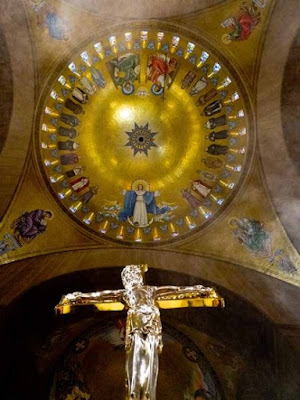Shooting fish in a barrel
has always struck me as an odd expression.
Who shoots fish? What are the
fish doing in the barrel in the first place?
How long would the barrel last once the shooting began? For some reason, it is understood to describe
something very easy, and more precisely, easily getting something out of people.
I am not sure how many
people use that expression for it, but I get the impression that is how some
folks bent on raising funds view the prospect of speaking to a congregation at
Mass: a captive audience, sitting ducks, fish in a barrel.
You have no idea how
many solicitations, pleas, and proposals I receive from organizations convinced
that their causes are worthy of presentation in the context of the Eucharistic
worship of the Church. Some of them even
offer to provide a priest to celebrate and preach all the weekend Masses at a
parish, and give Father Pastor a much-needed break. Of course, his homily will instruct the
people to give to the preacher’s organization, and of course its delivery in
the context of Mass will give that exhortation great authority. How many poor pastors are desperate enough
for a break that they take up this offer?
Others want only to provide
a “speaker” who will present his case at every Mass, then provide an
opportunity to give freely, or purchase goods, to support whatever cause or
organization.
Sometimes it is not
about money; rather, sometimes it is about involvement, or volunteering for a
particular program. Funny how the
Scriptures of any given week can be turned to give Divine endorsement to participation
in the speaker’s program by people “right here in this parish.”
Last
weekend, we went through the in-pew process for the Cardinal’s Appeal. The Appeal actually is a vital part of our identity as members of Christ’s
Church, and we must consider it as such as we allot our resources. The process whereby I lead you all through
filling out your pledge cards is effective, but passing tedious. I saw at least one fellow stand up and walk
out last weekend, not to return. Did you
know that there are two or three other collections every year that present
themselves as worthy of the same “now-everybody-take-up-your pencils”
approach? Lord deliver us! Can you imagine doing that once every three months? The Cardinal’s Appeal is unique, and I plan
to keep it that way.
Similarly,
as part of our ecclesiastical identity, our Archdiocesan Missions Office
assigns us one missionary appeal every three years. Only they know how many applicants beg for
that privilege! They apply some system
and some fairness to what could otherwise be a scrum, and provide the
ever-essential certainty of the worthiness of the cause and the fiscal
legitimacy of the organization.
Every
other year, I allow the Little Sisters of the Poor to come and beg (their
words) to support their work. These
Sisters provide their marvelous ministry here locally (Harewood Road NE) and
present a face of faithful religious life we see all too rarely here and
now. Look for them next weekend; they’ll
be brief, and happily take what you offer.
Next
to the fundamental obligation of offering the first fruits of your material
well-being to God through the parish offertory, these are the very few cases
where you will be told with Divine and ecclesial authority what you should do
with your time and money. After we have
met these responsibilities, we can all direct our own charitable efforts
according to our personal inclinations and experiences. Whether I continue to give annually to the Boy
Scouts is my decision; you have similar ones to make for yourself.
But
as long as I am Pastor, no one will take advantage of your openness to God and
His instruction; no one will replace deep reflection on the Word of God with
his own “pitch;” no one will equate fidelity and holiness with joining his
group or supporting his project; and nobody will take you worshippers of God as
“fish in a barrel.”
Monsignor Smith










